What is Sitecore Content Hub?
Exploring Sitecore's Content Hub DAM & Content Hub Operations
Exploring Sitecore's Content Hub DAM & Content Hub Operations
Start typing to search...
As marketers living in a digital world, we know that create, managing, and storing images, videos, and files can quickly get out of hand without the proper tools and processes. It’s probably safe to say we can agree that having all digital assets in a centralized, single source of truth location with proper tagging and metadata makes our lives as marketers a whole lot easier.
This solution is Sitecore Content Hub. Content Hub is a marketing tool that gives users the ability to manage the entire content lifecycle in one place. Content lifecycle management is the process of planning, creating, strategizing, optimizing, distributing, and measuring content throughout its lifetime in an organization.
Content Hub offers us the ability to implement workflow, custom metadata, specific user role and group permissions, asset renditions, public links, A.I. asset analysis (image + video), search facets, collaboration features, planning tools, budgeting and more.
Through this blog, we’ll go through the different Content Hub offerings and how each can help you and your organization revolutionize your content management process.
Top brands and organizations like Microsoft, Honda, Wolters Kluwer, GP Strategies, Schott, Hilti Group and many more are utilizing the capabilities of Content Hub to improve customer experiences, centralize their digital assets, enhance employee productivity, streamline their content creation workflows and more.
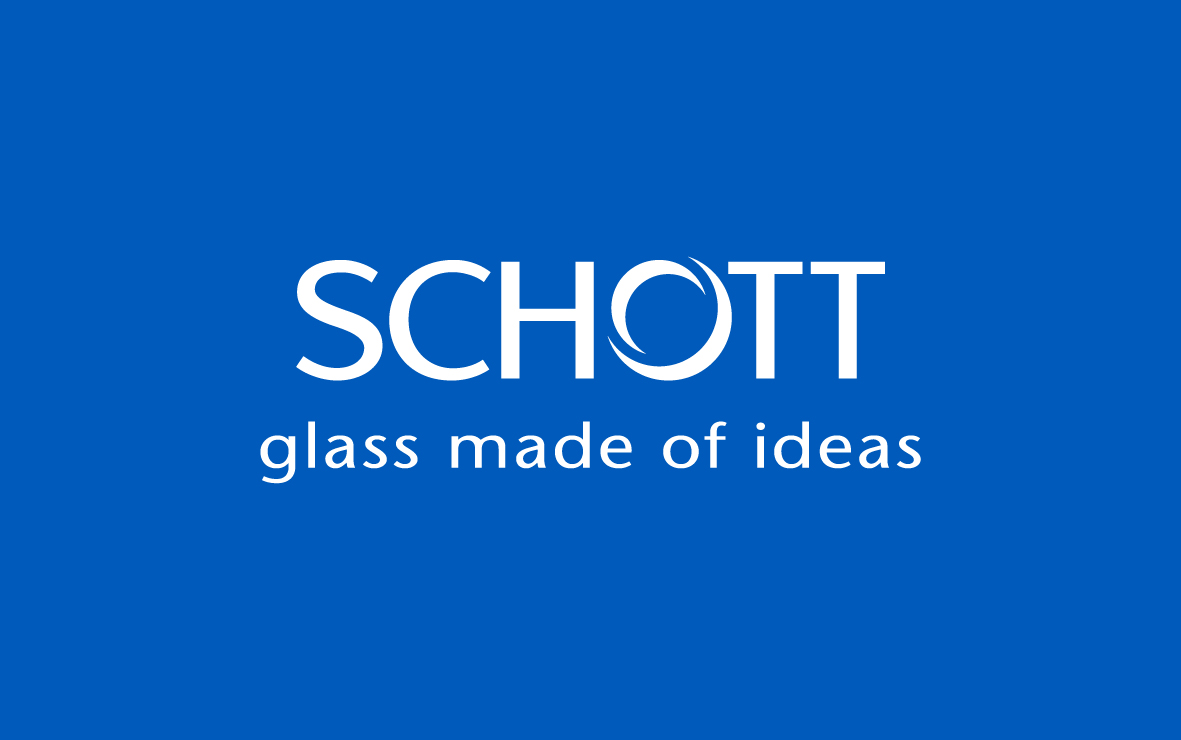
Industry: Manufacturing
About: SCHOTT has facilities in 34 countries making glass products across multiple sectors including healthcare, technology, energy, automotive, and aerospace.
“Sitecore makes the SCHOTT portfolio and our spirit of innovation accessible in such a flexible way that we can serve widely differing markets.” - JÖRG DUHR, Head of Digital Experience, SCHOTT AG

Industry: Technology
About: Microsoft is one of the world’s largest IT companies and it’s website has 6.6 million visitors and 56 million pageviews across over 100 different markets.
“The end-to-end Sitecore solution has enabled Microsoft to develop a world-class platform that delivers high-quality, personalized and targeted content to millions of partners across the world.” - NICOL CHADEK, Director of Digital Marketing Operations, Microsoft
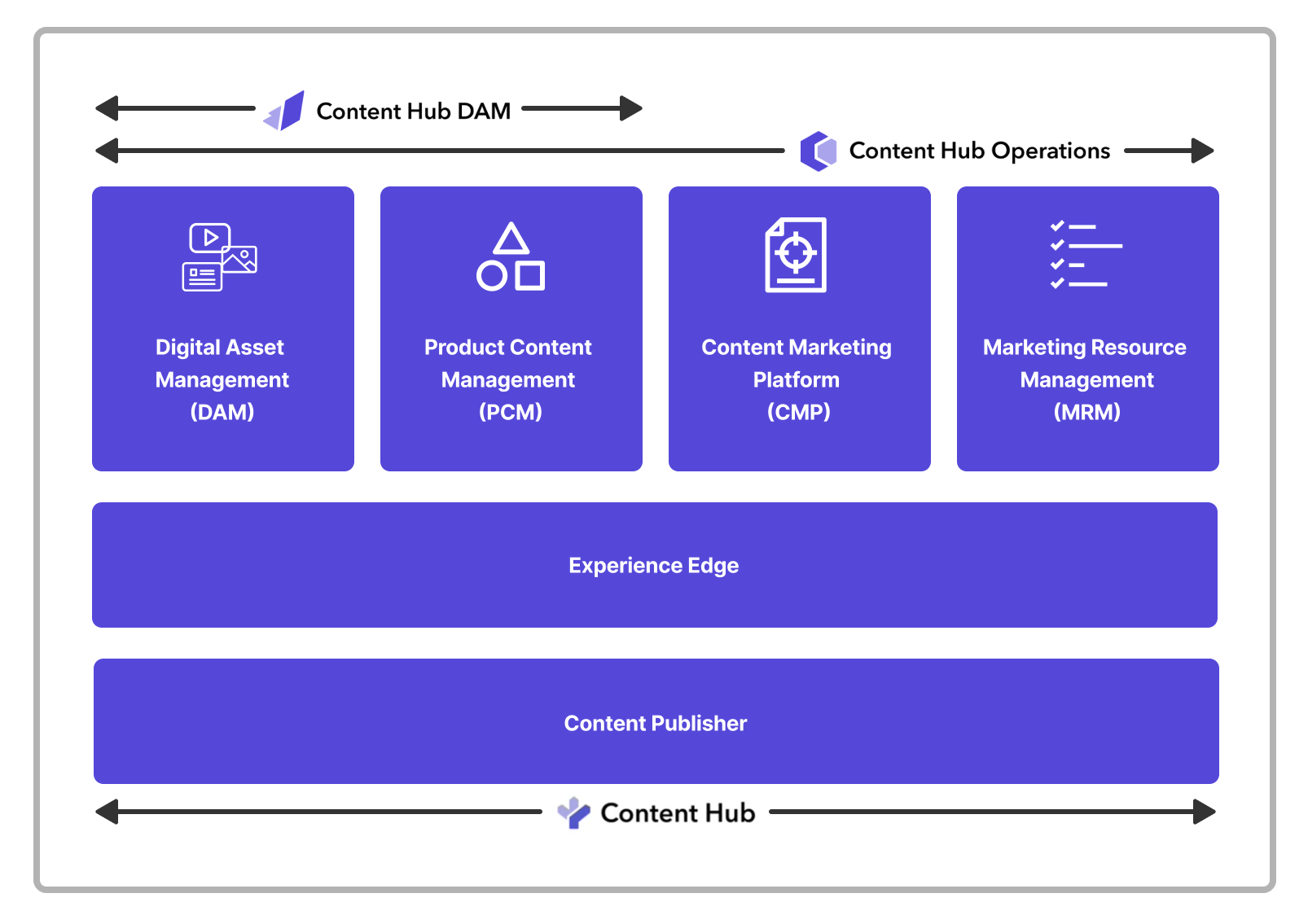
| Sitecore Content Hub | Content Hub DAM | Content Hub Operations |
|---|---|---|
| Sitecore DAM (Digital Asset Management) | ✅ | ✅ |
| Sitecore PCM (Product Content Management) | ✅ | ✅ |
| Sitecore MRM (Marketing Resource Management) | - | ✅ |
| Sitecore CMP (Content Marketing Platform) | - | ✅ |
| Experience Edge | ✅ | ✅ |
| Content Publisher (formerly CHILI Publish) | ✅ | ✅ |
Sitecore DAM (Digital Asset Management)
Sitecore PCM (Product Content Management)
Sitecore MRM (Marketing Resource Management)
Sitecore CMP (Content Marketing Platform)
Experience Edge
Content Publisher (formerly CHILI Publish)
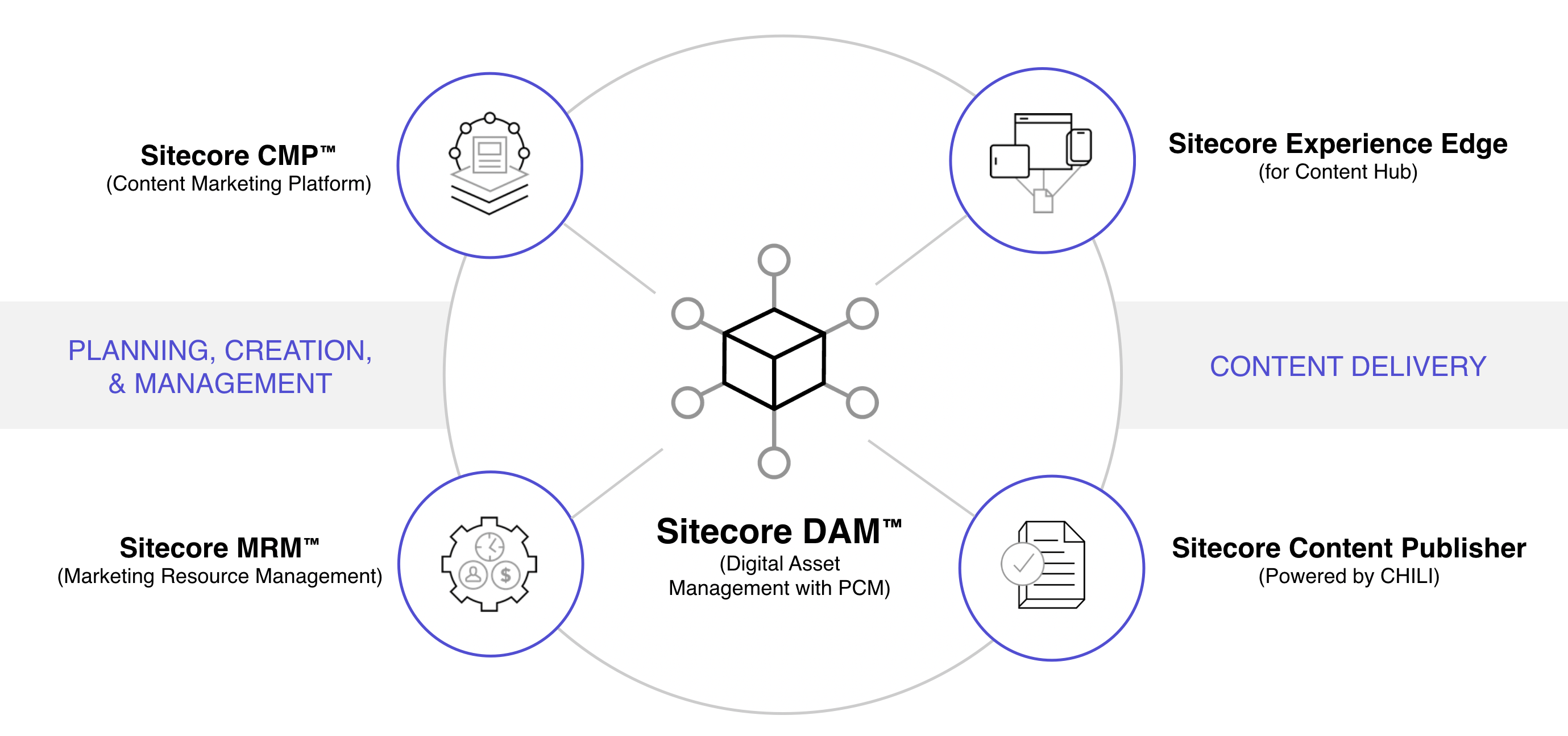
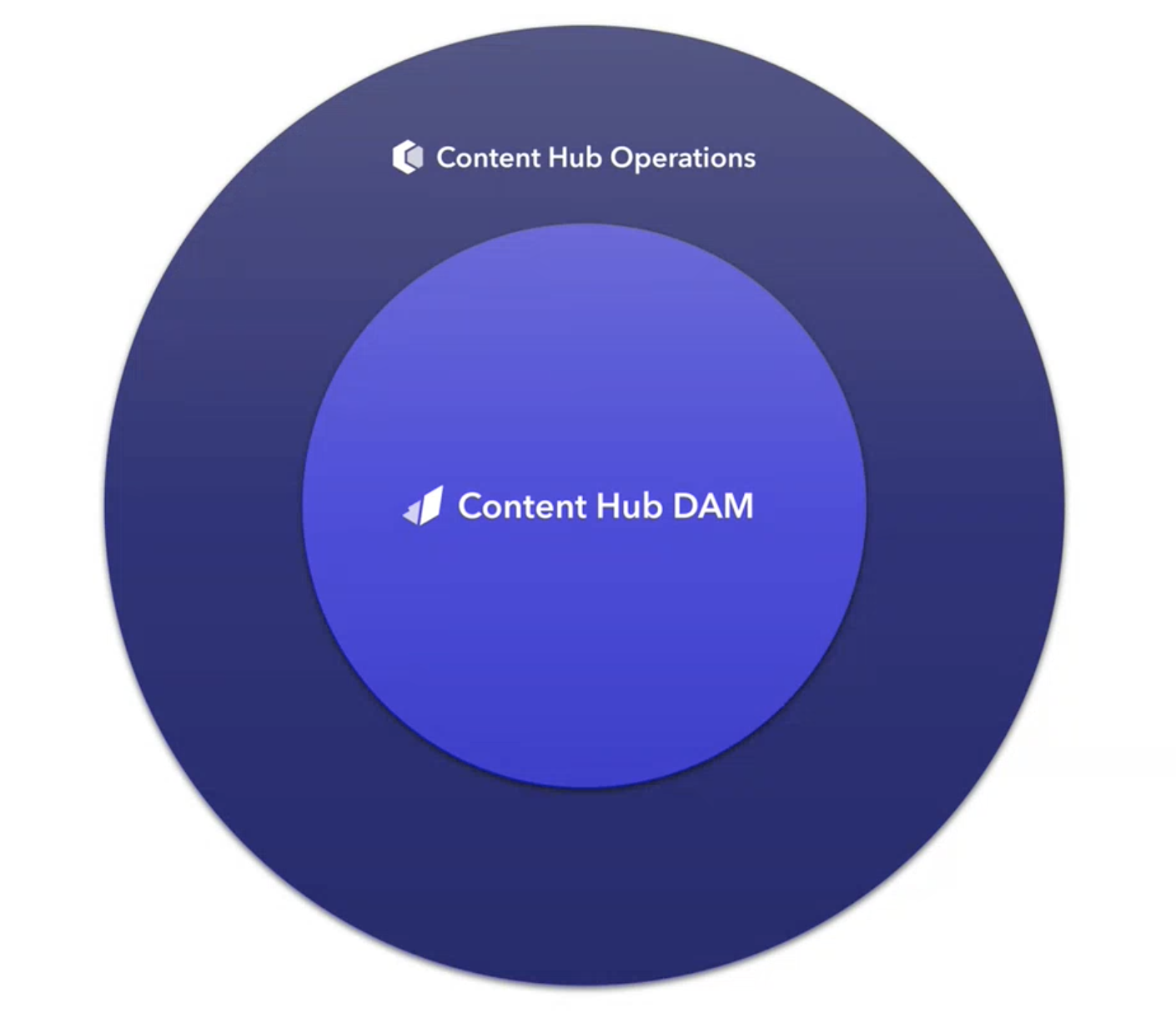
Content Hub Operations is a superset of Content Hub DAM. Content Hub is sold as Content Hub DAM (DAM + PCM) and as Content Hub Operations (DAM, PCM, CMP, MRM).
Bother Content Hub offerings come with Experience Edge and Content Publisher (formerly Chili Publish).
This is where content is published back out to any channel or downstream apps.
This is a brand management tool that allows users to quickly create below-the-line content (high volume, low complexity, bespoke digital assets) that is being created for a customer. This is opposed to above-the-line content (high touch, very labour intensive, typically for advertising like billboards or national ads).
Content Publisher allows organizations to create templated advertising. This is most beneficial for franchises where a global brand needs to maintain and adhere to brand standards but marketing initiatives are done at a local level (ie. fast food, car dealerships, etc.)
Content Hub ONE has a similar base to Content Hub in the way it streamlines content management, but it’s a separate Sitecore product entirely. It is not an extension or part of Content Hub, but a lightweight headless content management system (CMS) product.
This is a tool for content marketing that is easy to use. It helps manage the needs of content modellers, authors, and developers. You can define types of content, store content based on those types, store media assets, and publish content. Users can access the published content and assets through the Sitecore Experience Edge CDN endpoints. They can do this using different channels, like web, mobile apps, kiosks, social media, and POS systems.
It’s a composable part of a DXP the same way Content Hub DAM can be used independently of the rest of the Content Hub stack. Content Hub ONE is a simplified and economical way to get started with Sitecore’s Content Cloud product line which includes Content Hub Operations (the full version of Content Hub).
Having multiple tools, disjointed systems (different teams creating different content), convoluted processes, inability to collaborate, poor visibility into performance, and the volume of content required/needed.
In many organizations, content is authored and managed in the channel where it is published.
This comes with several disadvantages:
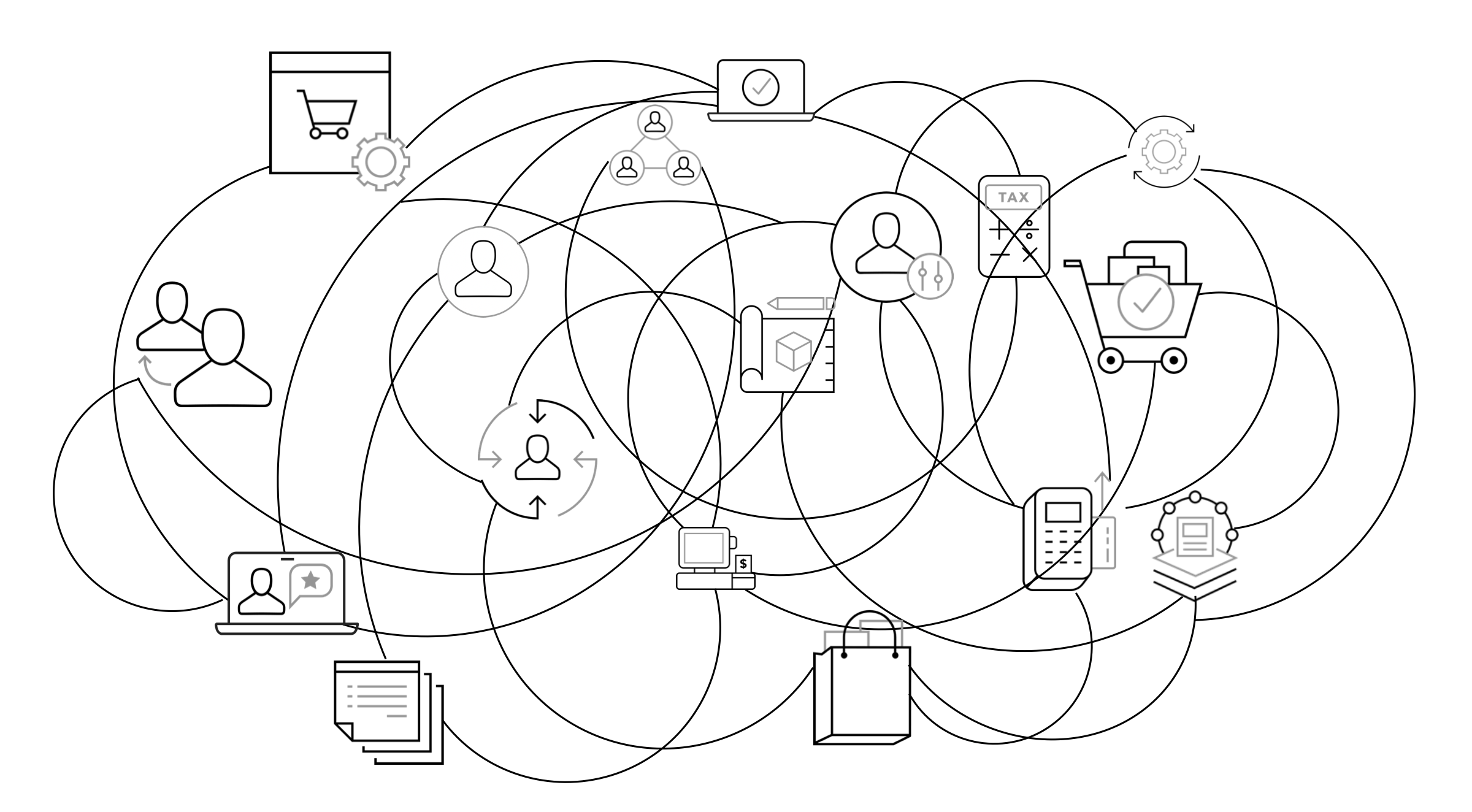
There are many factors that are contributing to what many are calling “The Content Crisis”:
Content currently exists in multiple locations across the organization and is not easily findable. It’s hard for users to find exactly what they are looking for when they need it and in the correct format. Due to the lack of centralization and standardization, users face challenges when searching for specific content, causing frustration and delays in their work processes.
When content is created by different teams or groups in separate silos, it’s hard to ensure brand consistency is maintained across all published content. This can lead to confusion among your audience and negatively impact your brand image.
Running multiple marketing campaigns at the same time is a complex process that requires careful consideration of the different audiences being targeted for each campaign. Each campaign must have its own unique content specifically tailored to appeal to the respective target audience at every touchpoint. Marketers struggle with the process of prioritizing and allocating resources for which content to create first for which campaigns for which audiences, etc.
Creating and collaborating on content can be a challenging and time-consuming process. It can also require the use of several tools and software applications. For many content creators, the review and approval process is particularly difficult, as it often involves disjointed systems and convoluted workflows that can hinder creativity and make it difficult to produce quality assets in a timely manner.
When digital assets are created or purchased, it’s imperative to have a system in place to control their usage rights. Proper control measures help organizations avoid the potential risks and consequences of misuse. For instance, marketers may inadvertently use the wrong asset, which can lead to legal disputes, loss of revenue, and reputational damage.
The amount of content required to support personalization efforts across channels and touchpoints requires a management system that can scale to meet the organization’s needs. Otherwise, what starts as an inconvenience to locate assets can escalate to unorganized chaos that wastes time and causes user frustration.
In order to mitigate the challenges these factors bring, organizations (especially within marketing teams) need to start working in synergy, not in silos:
Sitecore Content Hub not only offers tools to solve the challenges organizations face with content management, but it’s also part of a composable marketing stack and fully integrates with Sitecore’s CMS for a more impactful investment.
“Those using a DAM spend 28% less time searching for assets and 34% less time managing their assets each week.”
- Brandfolder and Demand Metric, “State ofDigital Asset Management” Report, 2020“Research shows that marketing teams waste almost a day a week hunting for assets - a DAM gets that time back and can improve productivity by a massive 30-35%.”
- The Social Economy: Unlocking value and productivity through Social Technologies, McKinsey, 2021
One place to create and distribute content: A master content hub for all types of marketing content, assets, and product master data - with the ability to distribute across any channel
Understand content effectiveness: Bring together customer behaviour & content consumption through an engagement score to understand which content performs best
One unified user experience: Role-driven UI with tailored capabilities to address each unique role in marketing: from creators to editors to marketing operations, merchandisers, etc.
Enable personalization at scale: Easily manage the creation of voluminous content required to deliver highly personalized digital experiences to end-customers
Content Hub provides a centralized single source of truth for digital assets, which maximizes the strategic value of content.
It’s an integrated marketing-friendly solution for unified content planning, production, collaboration, and management.
Additionally, it allows for better content performance tracking and reporting to leadership.
Management and leadership also benefit from having a single source of truth for digital assets as it can optimize efficiencies, lower costs, increase productivity, and speed up time to market.
The content performance tracking and reporting capabilities of Content Hub provide better and more measurable content insights, which can give leadership greater confidence in the marketing team's ability to execute strategic decisions.
This positions the marketing team as a trusted and valued contributor capable of delivering results when facing business challenges.
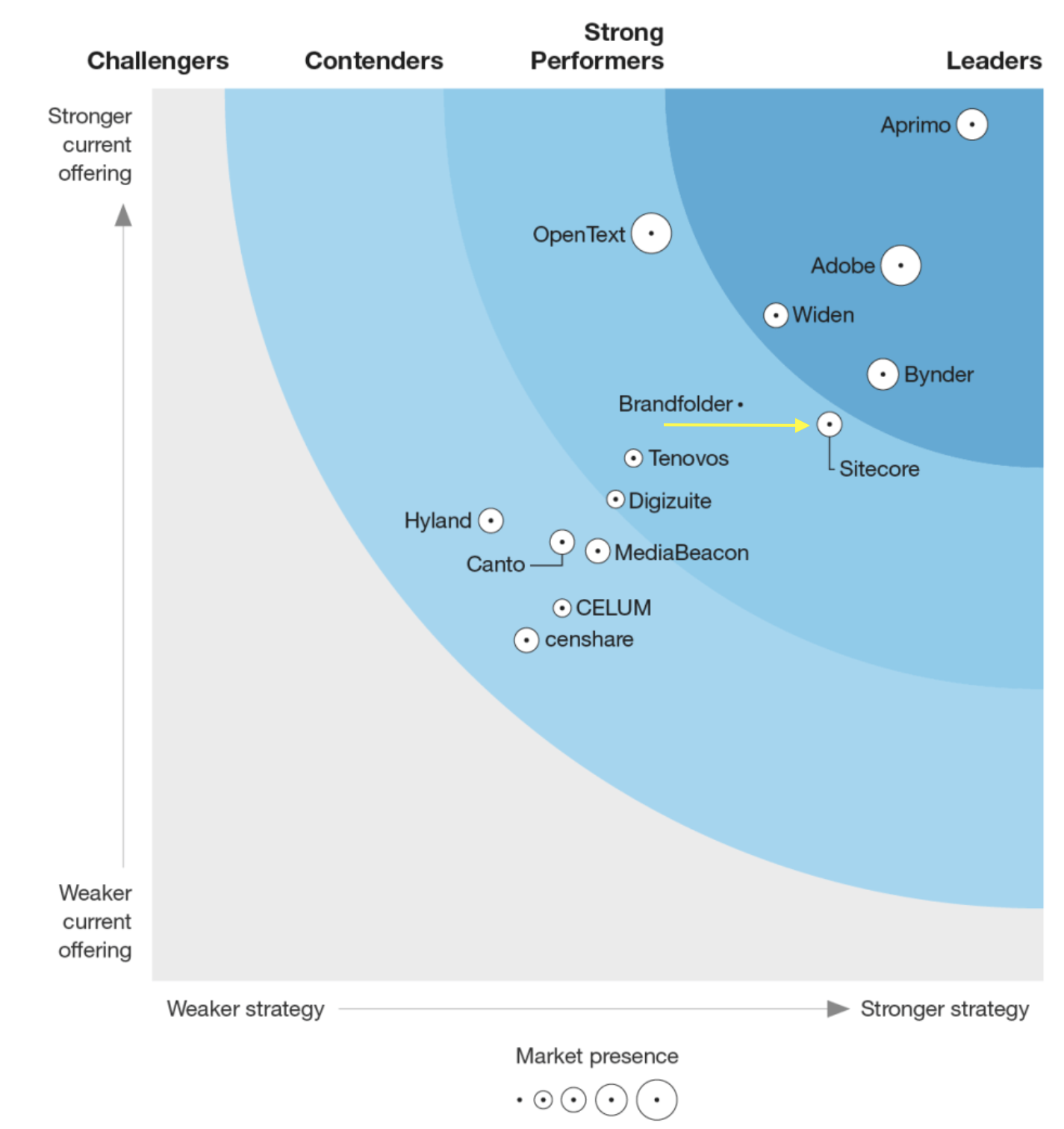
Sitecore Content Hub was recognized in 2022 in The Forrester Wave report for Digital Asset Management for Customer Experience as a Strong Performer.
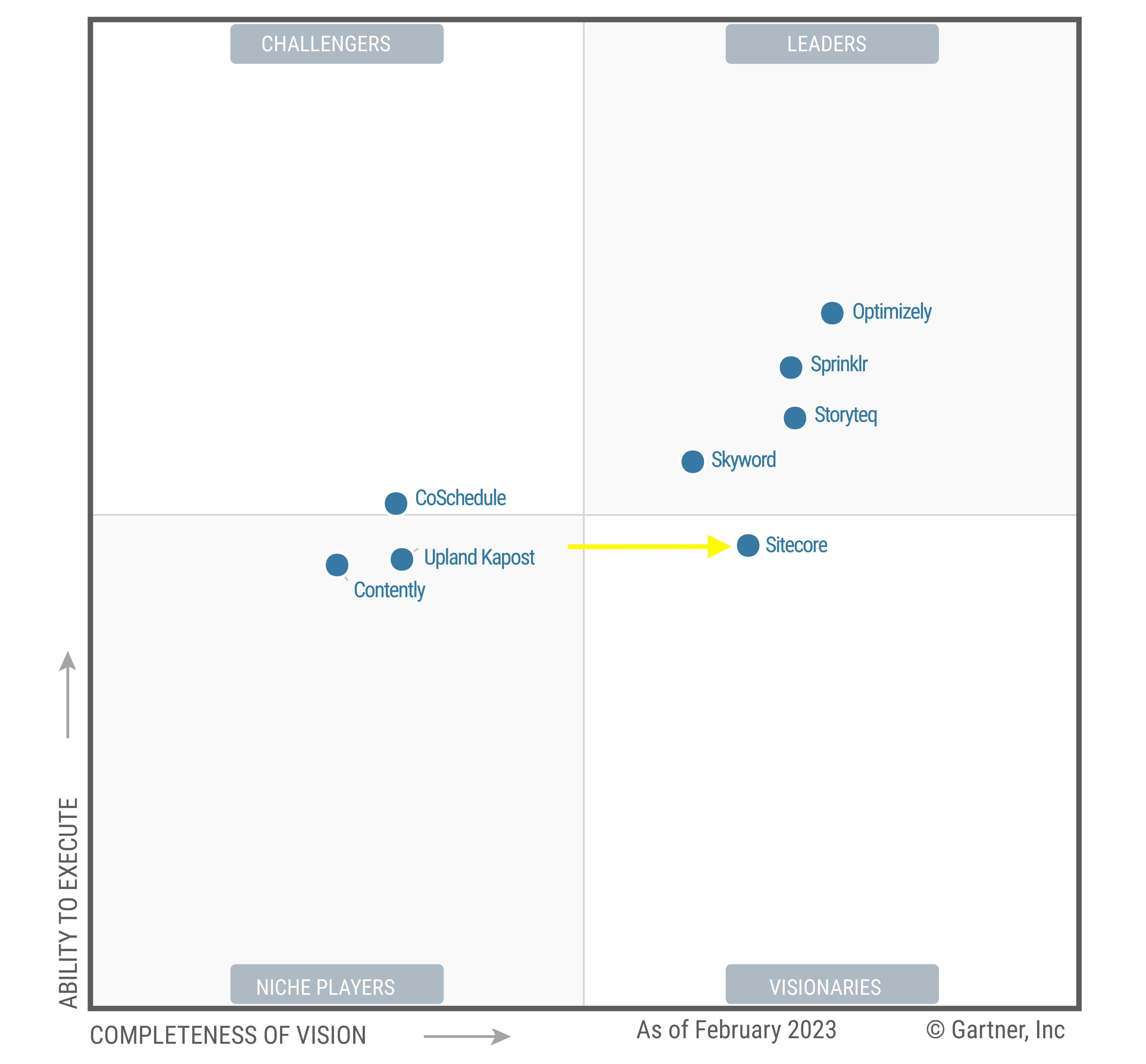
Sitecore Content Hub was also recognized in 2023 in Gartner’s Magic Quadrant for Content Marketing Platforms as the only Visionary.
Fishtank is a Gold Sitecore Partner with a dedicated team of Sitecore experts and Sitecore MVPs. We’re all about long-term relationships and consistent results. You’ll find we’re down-to-earth, true to ourselves and honest to our clients. We’re technology-first but people-powered. We put people first every time - in our business and our work. You can feel confident leaving your most important marketing asset in our hands.
Your Content Hub will have custom-built schemas, taxonomies, user accounts/roles/groups, search facets, metadata, renditions, AI asset analysis, and mass edit fields. Everything is uniquely tailored to the needs of your business.
We work with your team to ensure your assets are properly prepared with cleansed metadata/tags and help create a system that works for them to facilitate this process.
We can provide demos, user training, and documentation to help your users learn the ins and outs of your Content Hub to get the most out of it.
If you find that you need to make adjustments or changes post-migration, we're here to make that happen and to make sure your Content Hub serves the needs of your organization to its fullest potential.
If you and your marketing team need to consolidate your assets into a centralized, easy-to-use platform and want to get a 360° view of your content landscape, reach out to our team of Sitecore MVPs at [email protected] to find out if Sitecore Content Hub is the right solution for your organization.